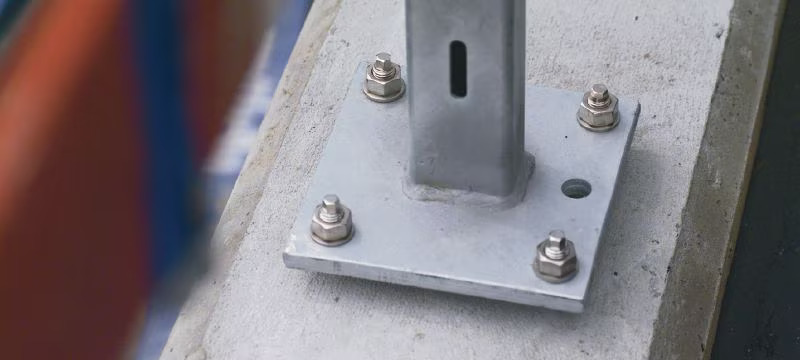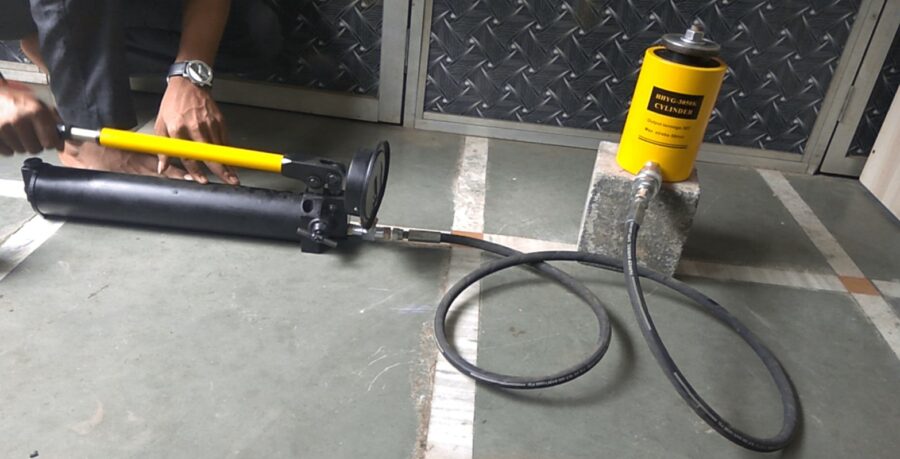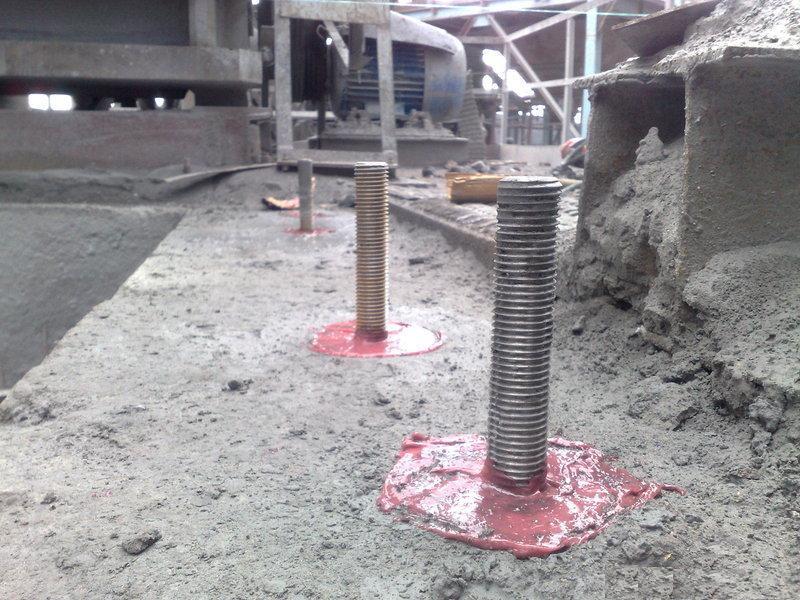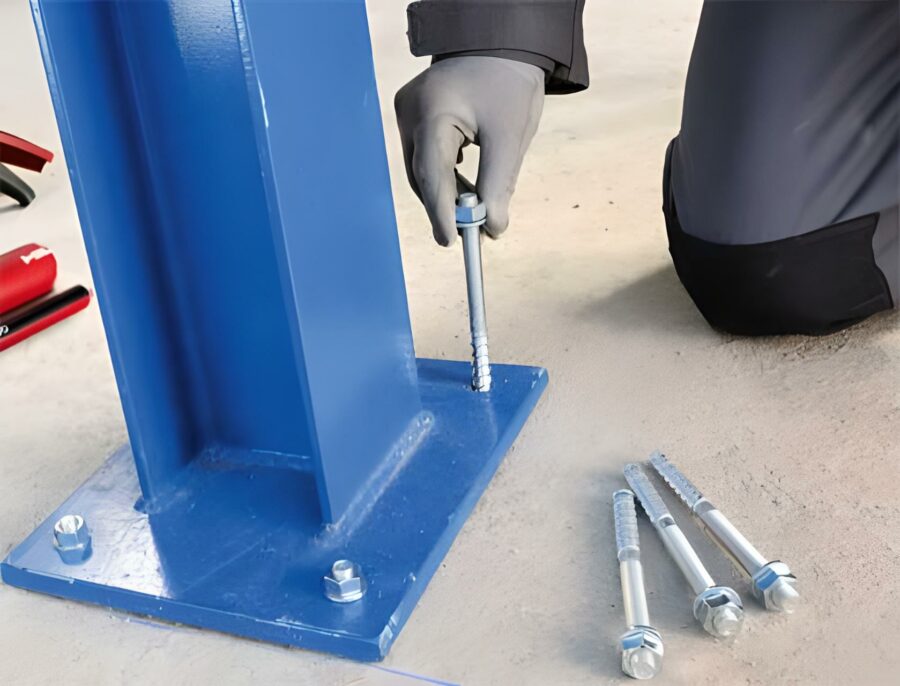Contents
Chemset anchors, also known as chemical or adhesive anchors, are a pivotal innovation in the construction and engineering industries. These anchors, unlike their mechanical counterparts, rely on a chemical bonding process to secure fasteners into substrates such as concrete, brick, or stone. This method provides unparalleled strength, versatility, and reliability, making chemset anchors an indispensable tool for a variety of applications.
What Are Chemset Anchors?

Chemset anchors consist of two main components: a steel anchor (such as a threaded rod or rebar) and a chemical adhesive. The adhesive typically comes in the form of a two-part resin, which is mixed at the point of application to create a powerful bonding agent. When the resin is combined with a hardener, it undergoes a chemical reaction that causes it to cure and solidify, anchoring the steel rod firmly into the substrate.
The primary advantage of chemset anchors over traditional mechanical anchors is their ability to distribute loads more evenly and reduce stress concentrations. This results in a more reliable and durable fixing, particularly in substrates that might be compromised or less uniform.
Types of Chemset Anchors

Chemset anchors come in several varieties, each designed for specific applications and load requirements:
- Injection Systems: These involve injecting the resin directly into a drilled hole before inserting the anchor. This method ensures that the adhesive fully encapsulates the anchor, providing maximum bond strength.
- Cartridge Systems: Pre-filled cartridges containing the resin and hardener are used with a special dispensing gun. The two components mix as they are extruded, allowing for precise application.
- Capsule Systems: These are pre-measured capsules that are inserted into the drilled hole. When the anchor is driven in, it breaks the capsule, mixing the resin and hardener and initiating the curing process.
Key Features and Specifications
When selecting chemset anchors, several factors must be considered to ensure they meet the specific needs of the project:
- Load Capacity: Chemset anchors are designed to handle high load capacities, making them ideal for heavy-duty applications such as structural connections and seismic retrofitting.
- Curing Time: The curing time of the resin varies depending on the formulation and environmental conditions. Fast-curing resins are available for projects requiring quick turnaround times.
- Temperature Resistance: Some chemset anchors are formulated to withstand extreme temperatures, both hot and cold, making them suitable for a wide range of environments.
- Chemical Resistance: In corrosive environments, it’s essential to use chemset anchors that are resistant to chemicals and other aggressive substances.
- Versatility: Chemset anchors can be used in a variety of substrates, including cracked and uncracked concrete, masonry, and even natural stone.
Applications of Chemset Anchors

Chemset anchors are used in a wide range of applications across various industries:
- Construction: In building construction, chemset anchors are used to secure structural steel elements, curtain wall systems, and other critical components. They provide a reliable solution for anchoring into concrete and masonry where mechanical anchors may not suffice.
- Infrastructure: Chemset anchors are crucial in infrastructure projects such as bridges, tunnels, and dams. Their ability to handle high loads and resist environmental stresses makes them ideal for these demanding applications.
- Seismic Retrofitting: In earthquake-prone areas, chemset anchors are used to retrofit existing structures to improve their seismic performance. The strong bond provided by the chemical adhesive helps ensure that connections remain secure during seismic events.
- Industrial Applications: In industrial settings, chemset anchors are used to secure heavy machinery, equipment, and safety barriers. Their high load-bearing capacity and reliability make them a preferred choice for these applications.
- Renovation and Repair: For renovation and repair projects, chemset anchors offer a versatile and effective solution for anchoring into existing structures. They can be used to reinforce weakened substrates and provide secure fixings in challenging conditions.
Advantages of Chemset Anchors
The use of chemset anchors offers several significant advantages over traditional anchoring methods:
- High Load Capacity: Chemset anchors provide superior load-bearing capacity, making them suitable for heavy-duty applications and critical structural connections.
- Versatility: These anchors can be used in a wide variety of substrates and conditions, including cracked concrete and harsh environments.
- Reliability: The chemical bonding process creates a strong and durable connection that is less susceptible to failure compared to mechanical anchors.
- Even Load Distribution: Chemset anchors distribute loads more evenly, reducing stress concentrations and the risk of substrate failure.
- Ease of Installation: While the installation process requires careful preparation and mixing of the resin, the actual application is straightforward and can be performed quickly with the right tools.
Installation Process

The installation of chemset anchors involves several critical steps to ensure a secure and reliable bond:
- Hole Drilling: A hole is drilled into the substrate to the specified diameter and depth. It is essential to clean the hole thoroughly to remove dust and debris.
- Resin Application: The resin and hardener are mixed and injected into the hole using an appropriate dispensing system. It is crucial to fill the hole completely to avoid air pockets.
- Anchor Insertion: The steel anchor is inserted into the hole, rotating slightly to ensure even distribution of the adhesive around the anchor.
- Curing: The adhesive is allowed to cure according to the manufacturer’s instructions. During this time, the anchor must not be disturbed to ensure a strong bond.
- Load Application: Once the adhesive has fully cured, the anchor is ready to bear loads and can be used for its intended purpose.
Maintenance and Safety Considerations
To ensure the longevity and safety of chemset anchors, regular maintenance and adherence to safety guidelines are essential:
- Inspection: Periodic inspections should be conducted to check for signs of wear, corrosion, or damage to the anchors.
- Environmental Considerations: Be aware of the environmental conditions that could affect the performance of the chemset anchors, such as temperature changes and exposure to chemicals.
- Manufacturer Guidelines: Always follow the manufacturer’s instructions for installation, curing times, and load capacities to ensure optimal performance.
- Safety Gear: Use appropriate safety gear, including gloves and eye protection, when handling and installing chemset anchors to prevent exposure to the chemicals.
Conclusion
Chemset anchors are a revolutionary solution in the field of construction and engineering, offering unmatched strength, versatility, and reliability. Their ability to secure heavy loads in a variety of substrates makes them indispensable for a wide range of applications, from building construction and infrastructure projects to industrial installations and seismic retrofitting. By understanding their features, installation process, and maintenance requirements, you can leverage the benefits of chemset anchors to enhance the safety and durability of your projects.




